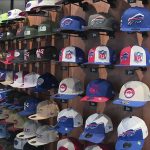Outdoor Industry Association has published the bi-annual top-line retail sales report for the outdoor industry. The reports include a 12 month review (last six months of 2003 and first 6 months of 2004 roll-up) and details specialty and chain store sales from February-July of 2004. The entire 230 page report covers major categories like equipment, apparel, and footwear at both specialty retailers and chain retailers. This issue of the report also includes paddlesports as a category for the first time.
There are also over 200 subcategories covered in the report, including tents, backpacks, climbing gear, food, camp accessories, stoves, outerwear, sportswear, and many more. OIA has identified three companion channels to complement the existing specialty and chain retail distribution: general/mass merchants, department stores, and internet/catalog retailers.
The report estimates that through all distribution channels combined, the total size of the outdoor industry for the 12 months prior to July of this year was $12.7 billion. This is roughly an 11% increase over last year, when OIAs state of the industry report estimated $11.3 billion in year-long sales.
When this number is combined with the other human-powered outdoor industries-ski, snowboard, bicycle, and fly-fishing-total human powered outdoor activity sales are $20.1 billion. These numbers are sure to provide some valuable ammunition in OIAs fight to preserve wilderness land and obtain funding for key government programs.
There is an interesting shift in the retail environment for outdoor apparel and footwear in particular. The report points out that 24% of consumers say they purchased outdoor products at department stores, and these purchases are motivated more by fashion than function. While it is true that many department store brands are capitalizing on the outdoor look, there are also many outdoor brands capitalizing on the department stores broad, mainstream distribution.
Big multi-channel companies like Nike and adidas have long distributed outdoor-inspired footwear and apparel through this channel, but now several core brands-most notably The North Face-are pushing both technical outerwear and outdoor fashion apparel through these pipelines.
The Leisure Trends Group estimate that, based on consumer research, department stores sell just over $1 billion in outdoor apparel and $1.1 billion in outdoor footwear. Outdoor specialty stores sell $937 million in apparel and $211 million in footwear.
This is not to argue that every outdoor apparel and footwear brand should open up all distribution to any department store. The early adapters or the customers who are looking for the most innovative, technical gear generally are only reached through a specialty retailer. But a well though out, segmented distribution strategy has helped many outdoor companies boost sales and keep the specialty channel happy and profitable.
General/mass discount retailers are also having an effect on outdoor retailers and vendors alike, but this impact is more on the equipment side of the industry. Outdoor specialty retailers sold $221.8 million in equipment over the 12 month period covered in the report, while outdoor chain stores sold $505.5 million. General/mass discount retailers sold $1.1 billion in outdoor equipment during the same period.
OIA correctly points out that one area where these General/Mass Discount chains are unable to compete is where the product is “clearly innovative and the advantages to the consumer are clearly articulated.” The biggest advantage General/Mass Discount chains have is in commodity items, where there are few perceived benefits between a core outdoor brands product and a knock-off.
Both of these shifts in the retail environment put further pressure on outdoor specialty and chain retailers. The solution is relatively simple, but two-sided. First, vendors who innovate alleviate the pressure from both department stores and General/Mass Discount retailers. Second, buyers who look for innovative products not only from the big established core outdoor brands, but also from new up-and-coming brands, and support these brands can make the difference between success and failure.
Most of this is not news, but this data from OIA highlights the extent of the competition and shows that most American consumers are not shopping for outdoor gear in what the industry considers to be outdoor shops.
There are some encouraging signs for the specialty retail market. Over the trailing 12 month period, total sales through the specialty channel increased 5.8% year-on-year to $1.88 billion, not including paddle sports. Add the new metric to the mix, and sales through the channel totaled $2.17 billion, or 17.1% of the $12.7 billion total industry. Last year, specialty retail sales only represented 15.7% of the total industry, with $1.78 billion in sales.
Over the past six month period studied in detail in the report the specialty retail channel showed a sales increase of 4.7% to $795.1 million. The separate categories, labeled “equipment accessories,” “apparel,” and “footwear” all saw sales increases, but the “equipment” category, which includes tents, backpacks, climbing gear, sleeping bags, and snow sports equipment, was the only area of decline at specialty with $107.7 million in sales. This is a drop of 13.7% compared to $124.7 million last year.
Specialty retailers did send more equipment out the door, however. Unit sales in the category increased 2.6% for the half-year period. There are a variety of factors that could be behind this drop in dollars per unit sold, including exchange rate benefits, increased outsourcing of production, or a shift in the product mix to less expensive items.
Equipment accessories, which include items like duffels, waist-packs, and hydration, grew a modest 1.9% for the six-month period to $204.4 million compared to $200.6 million last year. This category was the only one that showed healthy pricing trends, with unit sales growth at 1.3%, slightly below dollar sales growth.
Apparel sales were the healthiest of the major categories with 12.6% sales growth in dollars, from $322.0 million last year to $362.4 million this year.
Footwear sales also demonstrated strong growth trends over this six-month period, with dollar sales increasing 7.6% to $120.7 million. Unit sales grew by 13.1%, out-pacing dollar sales by a large margin due to a $3.45 decline in the average selling price.
With the exception of equipment, these metrics all point to a healthy and growing outdoor specialty retail market. In the coming weeks BOSS will review the outdoor chain retail market and the effects it has on the specialty channel.
The report is provided free of charge to all OIA members. Non-OIA members can obtain a copy of this report by contacting Julie Meyers, Research & Marketing Manager at 303-444-3353.









